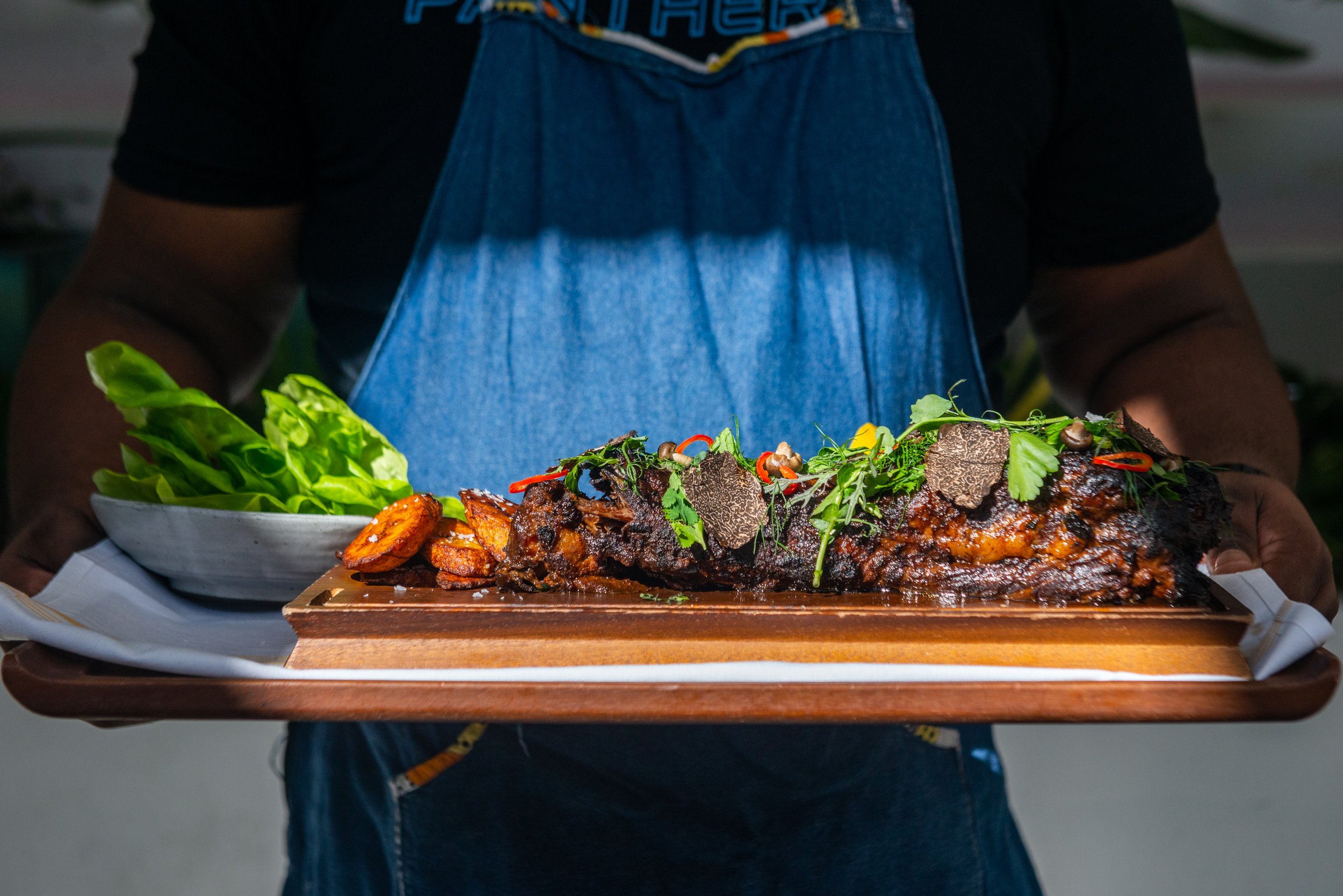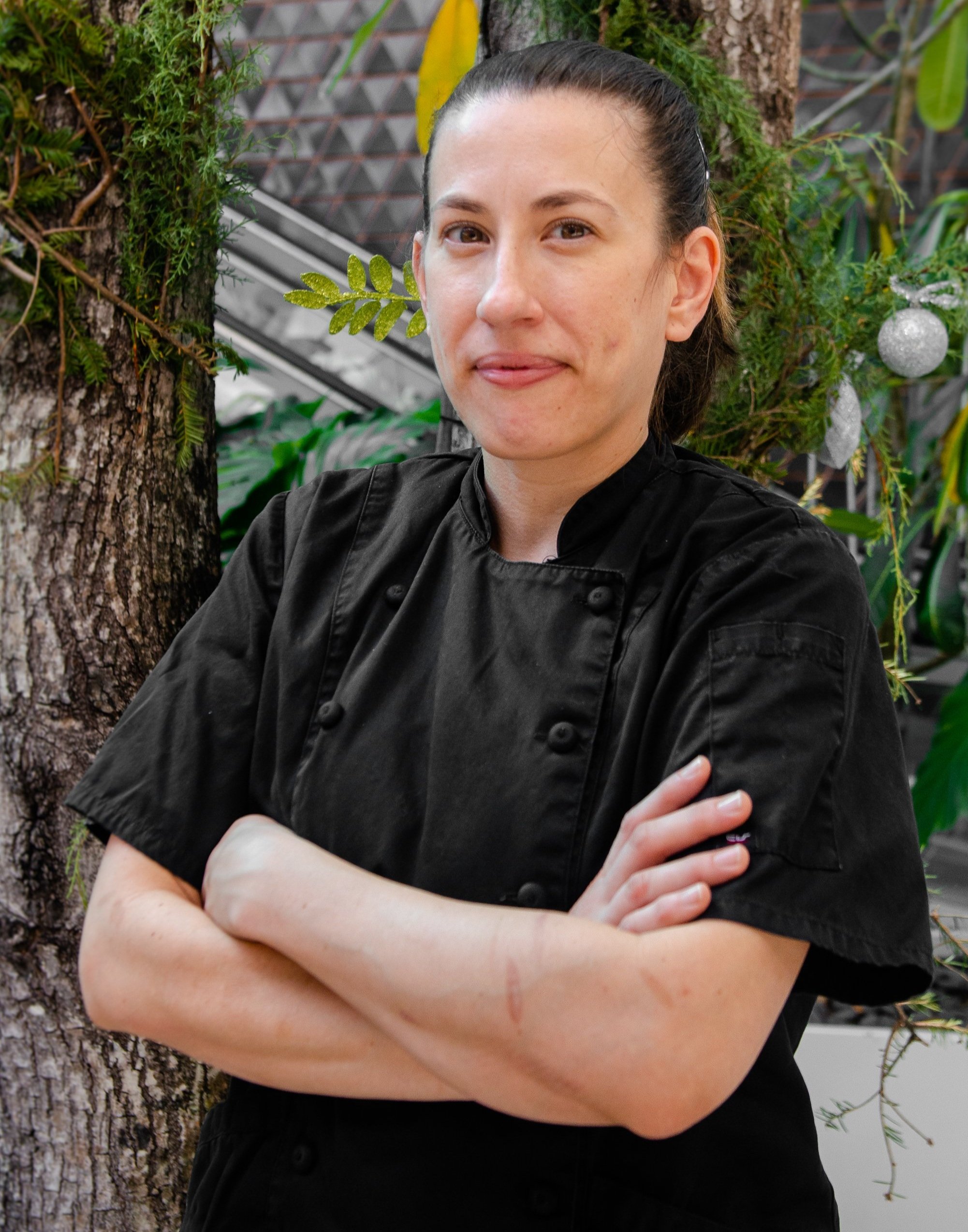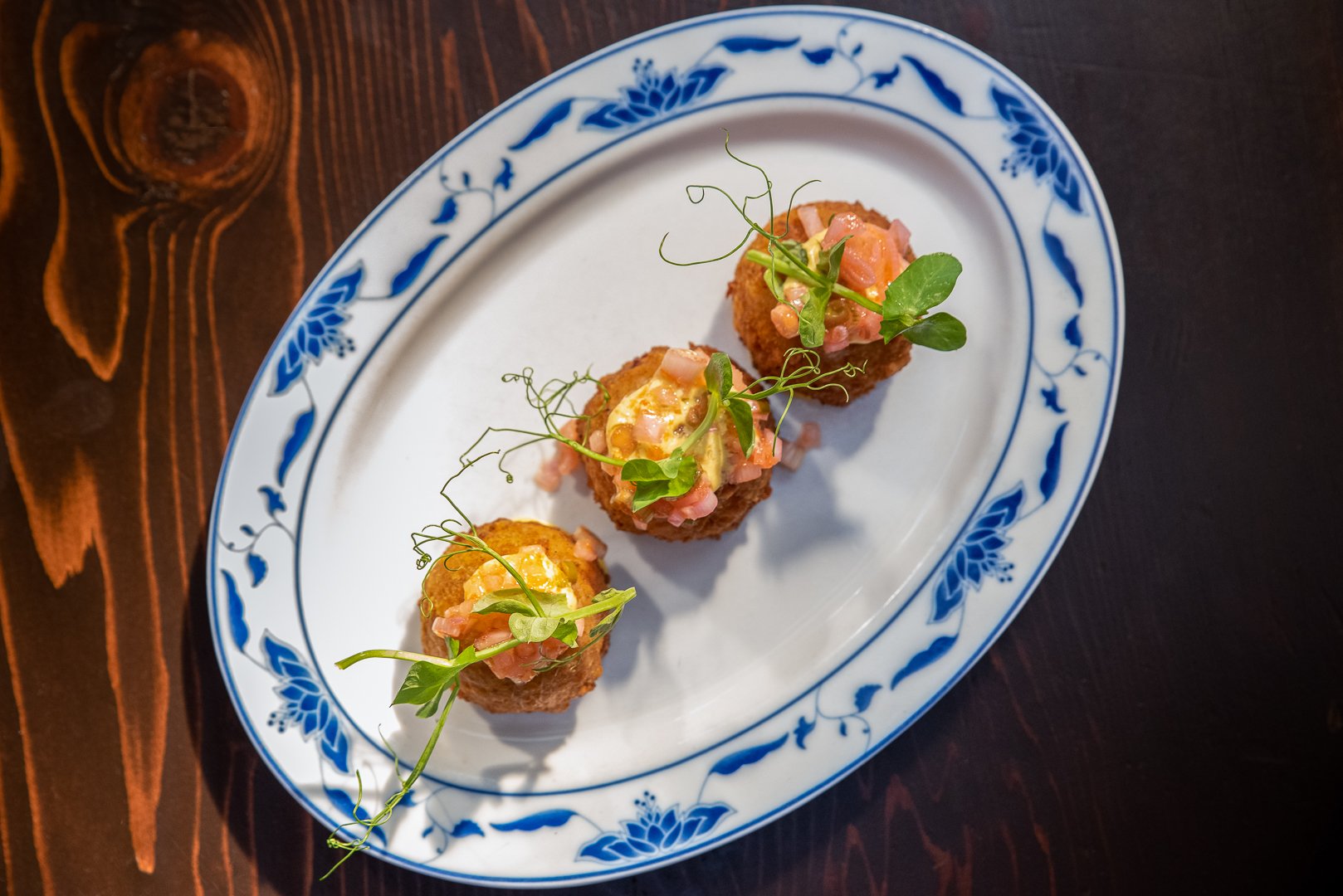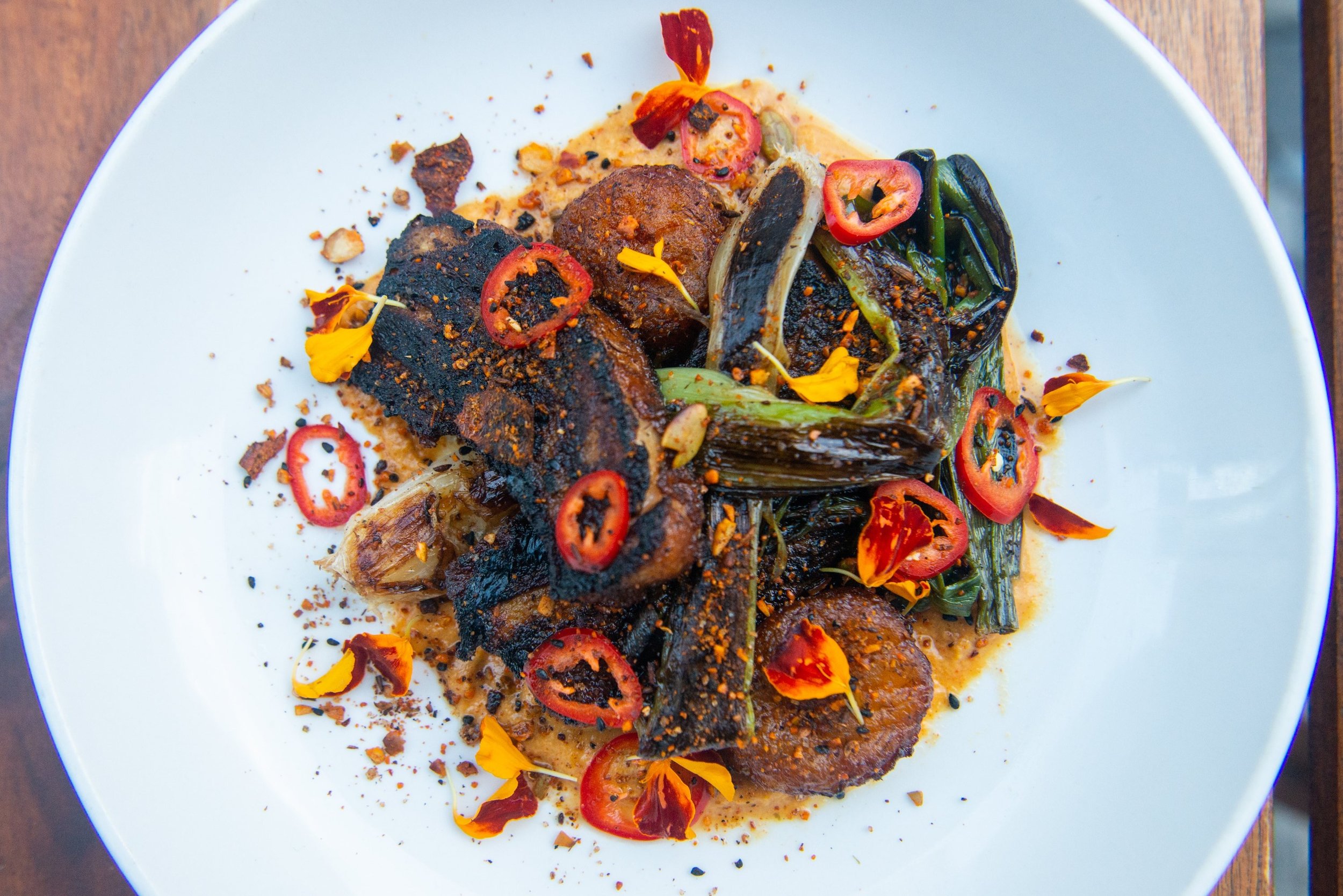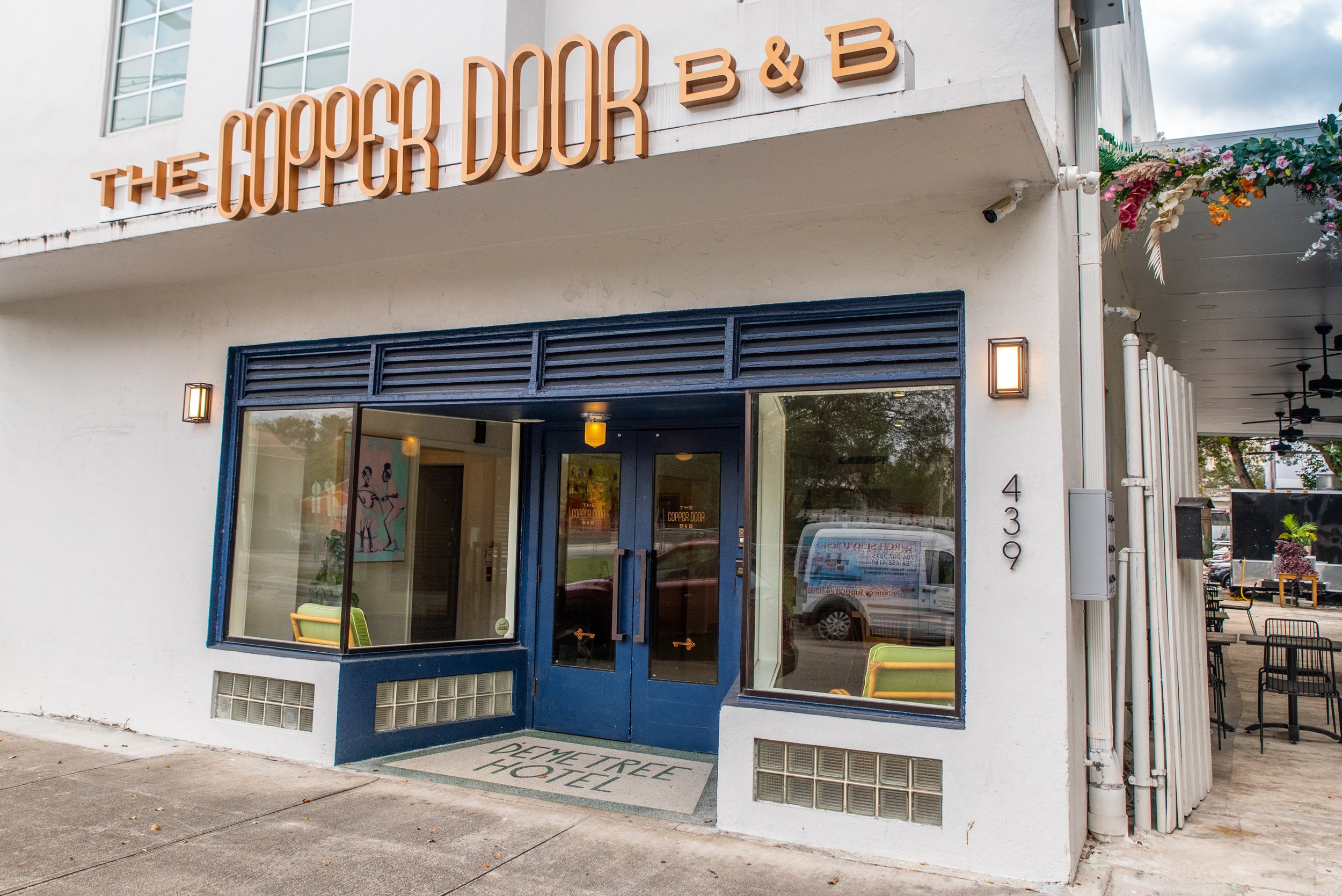The Name on The Door
Being the executive chef under a celebrity is often a difficult dynamic, but these Miami restaurant professionals have figured out how to make the most of the opportunity.
Whole fire-roasted wagyu oxtail from red rooster overtown
Marcus Samuelsson was not on board with the oxtail. Executive Chef (and Miami StarChefs Rising Star) Tristen Epps was trying to nail down a menu for Samuelsson’s newest restaurant, Red Rooster Overtown, and Epps was confident in his wagyu oxtail, a shareable experience that runs for $105.
Samuelsson argued that the dish might be too unfamiliar or expensive to the diner. But he’d never tasted it, so Epps put the whole-roasted oxtail on the menu anyway and hoped for the best. The stunt paid off when Samuelsson returned to Miami and sampled the brisket-like meat, punctuated by shaved black truffles and plantains. The oxtail stayed.
The role of executive chef under a big-name chef is usually a prestigious one but can also be associated with lack of creativity and pressure to live up to the brand. So how do you make a name for yourself when it’s not your name on the door?
For Epps, the collaborative push and pull is part of what makes his relationship with Samuelsson so special. “The compromise is where the beauty always lies,” says Epps, who built trust with his mentor through the years as sous chef of Red Rooster Harlem. Samuelsson sent him on tasting trips, helped him learn from other cuisines, and took the time to understand Epps’ own background.
Chef Andrew zarzosa
“He knows my mom. He knows my girlfriend, my family, my upbringing,” Epps says. “I’m really open to what he has to say. It used to be whatever chef said went. Now, it’s more of a discussion, even an argument, but it’s two minds working instead of just one.
At The Alley and LT Steak & Seafood, named for the famed Laurent Tourondel, Executive Chef Andrew Zarzosa caters to The Betsy Hotel guests with Tourondel’s menus featuring prime steaks, seafood and pizzas. But Zarzosa has a constant rotation of specials and dinner events that are all his own, and he likes to reinterpret the Tourondel classics with local, seasonal ingredients.
“Whenever I choose to work, it’s always about the place, about what they’re doing, the potential to do more,” Zarzosa says. “I always want to learn something, and I always want to contribute something. I learn a lot from Laurent. [His menu] only helps me as a chef.”
For example, Tourondel’s menu taught him to steam hen of the woods with aromatics before cooking. And sometimes, it’s Zarzosa who takes an idea further. LT had a char-broiled broccoli side dish, simple and meant to accompany the flashier entrees, but Tourondel’s technique gave Zarzosa an idea. He developed an elegant special starring char-broiled broccoli, deep-fried florets, broccoli-lemon mousse, and black truffle.
A large and heavily corporate restaurant structure can make these collaborations more difficult, but Ilkay Suuctugu, who is executive chef of the venerable Matador Room, takes ownership under Jean-Georges Vongerichten. When the season changes, she gathers a menu together featuring local ingredients, and Rising Stars alum Gregory Brainin, executive vice president of culinary development, works on building out the recipes with Vongerichten. “But it's up to me whether or not I want to utilize it,” Suuctugu says. “Then we talk about it, I send them pictures and recipes of my dishes, and we go back and forth to come to a final decision. They really have given me freedom.”
Rising Star Pastry Chef Samira Saade wants to stay with her mentor, pastry godfather Antonio Bachour, to learn as much as she can. “Antonio eats, sleeps, breathes pastry,” she says. At Bachour, it’s a collaboration among three instead of two. Saade keeps her sous looped into the brainstorming sessions because she often comes up with ideas that Saade can then replicate. They supplement the classic desserts with new creations as Bachour gets bored with the menu.
Head baker melissa catra
Likewise, dessert-making is exacting but collaborative at L’Atelier de Joël Robuchon Miami. Head Baker Melissa Catra has to live up to the standards of Executive Pastry Chef Salvatore Martone, Culinary Director Alain Verzeroli, and the late Robuchon himself, whose name conjures expectations of Michelin stars.
“[Martone] was here this week, and he already has an idea about what to do [with a dessert], and we’ll bounce ideas back and forth,” Catra says. “There’s a creative process to it. You have to build it and see if it’s OK with a few trials and errors.” Martone usually starts with the basic concept, and Catra chimes in until they have the right balance of sweetness and acidity with seasonal ingredients.
Only a year into his post at The Betsy Hotel, Zarzosa reminds his peers to look at it from the other chef’s perspective. It’s his name on the door, so he’s the one with the financial stake and reputation to uphold. The boss needs time to trust whoever is in charge of the kitchen.
“You go to work for a specific chef for a reason,” Zarzosa says. “I really wanted to learn from [Tourondel]. Whether or not he gave me freedom or control, that was my understanding walking in. You learn what you can until it’s your name on the door.

